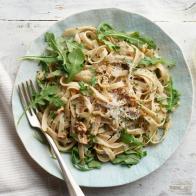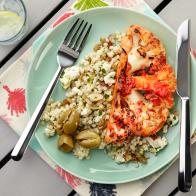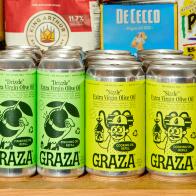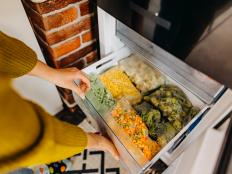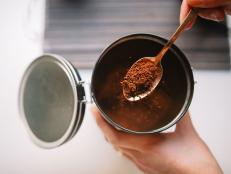8 Communal Food Experiences You Need to Try ASAP
Grab your crew!


bjunda
1. Crawfish Boil
Crawfish boils are a Louisiana Cajun tradition, and often serve as the main event for community gatherings.
To prepare for a meal, a “Boil Master” drops ingredients in a large pot, and ensures that the amount of time and order in which each component cooks is done properly. Once everything’s cooked, the pot is drained, and a fresh, vibrant array of seasoned crawfish and vegetables, usually corn and potatoes, is spilled along a newspaper-covered table.
Then everyone gathers ’round and picks up whatever they can get their hands on, straight off the table. So if you don’t come out of a crawfish boil a little messy, you’re not doing it right.

Daviles
2. Hot Pot
Hot pot is a Chinese method of cooking that involves a simmering pot of soup stock, the “hot pot,” at the center of a communal table. (That’s right. Most of the cooking happens at the dining table.)
Soup stocks range from a clear, bone to a deep red, spicy broth. Since it’s hard to please everyone, pots can come divided so two different broths can be going at the same time. Or, if you’re lucky, restaurants like 99 Favor Taste (yes, it’s Favor, not Flavor) offer individual hot pots built into large communal tables.
While the stocks simmer for the entirety of the meal, plates lush with raw ingredients are placed around the table, and everyone drops ingredients into the pot and out as they please. Typical plates include thinly sliced beef, leafy vegetables like watercress, root vegetables like lotus root and taro, enoki mushrooms, fish balls, quail eggs, dumplings, tofu, seafood and noodles. The list goes on and on, and it’s really totally up to diners exactly what they’d like to cook.
During hot pot, everyone dips freshly cooked ingredients in their very own customizable sauce, which often includes the likes of hoisin sauce, shacha sauce, chili oil, sesame oil, scallions and more. The possibilities are seriously endless with this meal.
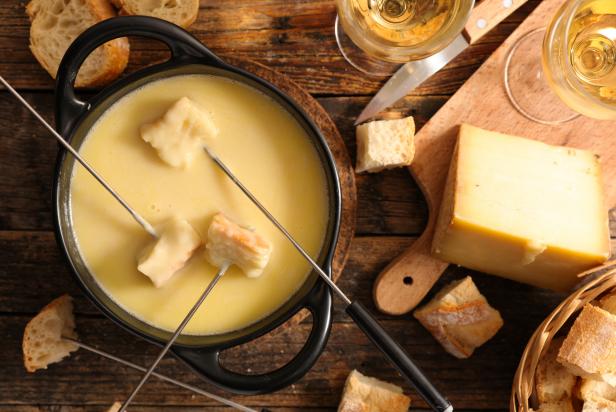
margouillatphotos
3. Fondue
Speaking of heated communal pots, the Swiss bring people together by way of melted cheese. The centerpiece of every fondue meal is a caquelon, or fondue pot, that is heated over a portable stove with a candle or spirit lamp. With long-stemmed forks, diners dip bite-sized pieces of bread into a luscious cheese mixture.
Fondue is prepared by putting together and heating a blend of grated or cut-up cheeses, wine, cornstarch and seasoning. Once the fondue is liquid smooth, it’s often topped off with a bit of kirsch, a cherry brandy.
One of the biggest rules of this meal is that the pot must be kept warm enough to keep the fondue smooth, but not so hot that it burns. That is: kept at a consistent temperature. If done correctly, a thin crust of toasted (NOT burnt) cheese will be waiting at the bottom of the pot by the end of the meal. The cracker-like crust is known as la religieuse, which translates to the nun in French, and is usually lifted out and eaten. (Wow, what a great form of self-validation.)
And if your bread gets lost in the fondue by accident? Then, according to Sylvia Lovegren’s book Fashionable Food: Seven Decades of Food Fads, tradition has it that you must buy drinks all around.

RuslanDashinsky
4. Ethiopian Cuisine
Ethiopian cuisine, no matter what you order, is designed for communal dining. Sharing and enjoying food with friends and family is a huge part of Ethiopian food culture, so much so that there’s word for it. Gursha is the practice of feeding someone a bite of food as a gesture of love or friendship.
Ethiopian cuisine centers around injera, a staple starch that is fried in a skillet and cooked into a soft, spongy and slightly sour pancake. Injera is served on a large communal platter, the gebeta, and acts as the base on which stews, vegetables and curries are piled. It’s kind of like a plate made of bread.
Diners start by ripping off pieces of injera with their hands – no utensils required here – and use those pieces to scoop up whatever’s sitting on the plate. And of course, when you give it a try, don’t forget to feed some to someone you love.
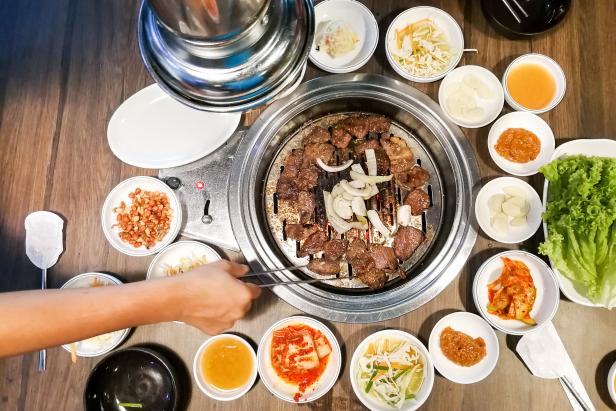
ThamKC
5. Korean Barbeque
If you haven’t had Korean barbeque yet, you NEED to.
At these meals, marinated and unmarinated meats – typically beef, pork or chicken – are grilled over a gas or charcoal grill. KBBQs can be done at home on a portable stove, but you’ve gotta make your way to a restaurant to get the full experience.
At a traditional KBBQ restaurant, grills are built into the center of large dining tables, and meat is cooked as you eat. The best part is that servers usually handle the actual barbequing of the meat, tending to your table several times during the course of the meal.
If you’re a first timer, try popular meats like bulgogi (marinated thinly sliced beef sirloin or tenderloin) and kalbi (marinated short ribs). Both are soaked in a mixture that includes soy sauce and sugar that gives the meat a rich, sweet-savory flavor.
KBBQ almost always comes with several banchan (side dishes) that come complimentary with your meat. Banchan varies by restaurant, but they can range from kimchi to macaroni salad to a freshly steamed egg dish, gyeran-jjim.
With so much food, it is tough to eat KBBQ all on your own.
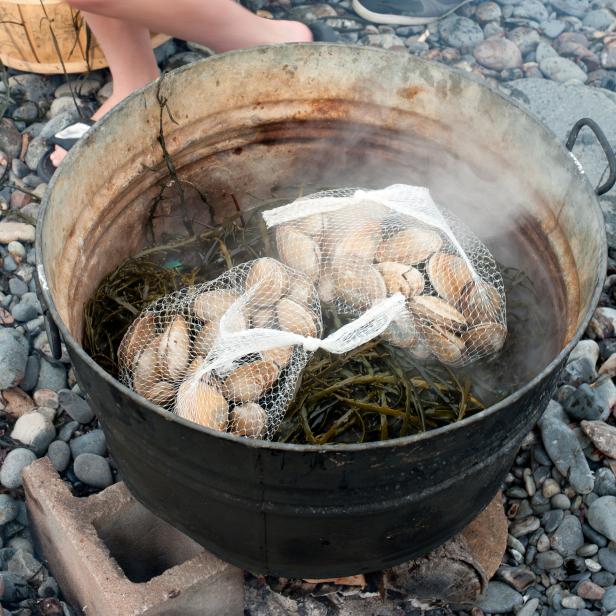
EJJohnsonPhotography
6. New England Clam Bake
This communal meal tradition from New England, a northeast region of the U.S., should be on your summer bucket list. Clambakes are a method of steaming seafood (lobster, crabs, mussels, soft-shell clams and more) and can be done right in a beach.
First, a fire pit is prepared in the sand and round stones are placed inside. A wood fire is started until the stones are glowing hot. Then, seaweed is gathered at the shoreline and a layer of the slippery green stuff is placed over the stones (sometimes within a pot or over a grill). A mound of seafood is placed on top of the seaweed, and steamed for several hours, while a sea water-soaked canvas or potato sack covers the pit to trap heat and steam.
Needless to say, it’s such a cool way to integrate cooking into an outdoor landscape. And the views probably aren’t bad either.
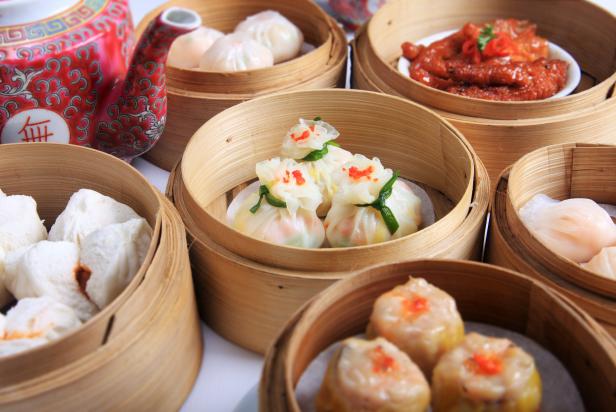
photosoup
7. Dim Sum
Before brunch was ever #brunch… there was dim sum. Dim sum is a Chinese, specifically Cantonese, style of cuisine that’s traditionally eaten on weekend mornings with family or friends. It’s also known as yum cha, which directly translates to “drink tea,” because dim sum is always enjoyed with an endless supply of the bev.
At a typical dim sum service, servers push several carts filled with steamer baskets or plates of bite-sized portions of food. Diners order as carts pass by, picking dishes right out of them. Dishes include steamed buns, like cha siu bao aka barbeque pork bun, congee, egg tarts, dumplings, sticky rice wrapped in lotus leaf and stuffed rice rolls – the list goes on and on. But the one dish that always gets the people going is: chicken feet. Totally worth a try, we promise.
The idea is to get a little taste of everything, which is why you have to go with a group of friends. Otherwise, you’ll be full after two to three tiny plates.

8. Kamayan
Instagram // @torontofood
Filipino food is having a moment, so it’s about time you got kamayan on your radar.
During one of these big traditional feasts, an array of food – that can honestly be comprised of anything – is spilled along a table. Kamayan meals vary, but dishes can include Lumpia (Filipino spring rolls), Tahong (mussels), and Lechon (roast pig). And thanks to the “boodle fight” concept, a dining style popularized by the Philippine Army, said pile of food is often served on banana leaves that are spread across the table.
Kamayan means eating with your hands, so no plates or silverware are needed. Diners are meant to take from the communal pile with their washed left hand, and then bring food to their mouth with their right. Rice is pressed between fingers and eaten between bites.
Photo: iStock
Related Links:
